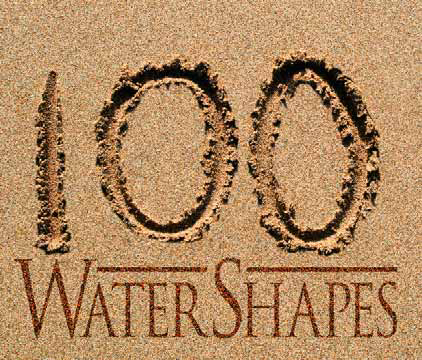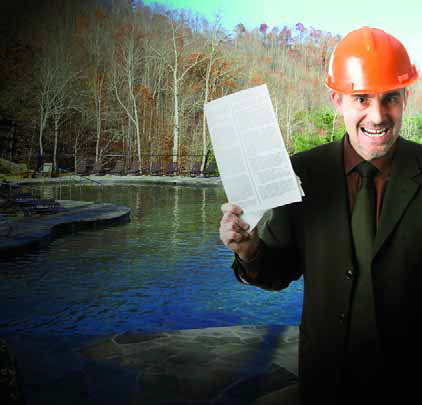Commentaries, Interviews & Profiles
When Jim McCloskey and I began working toward the launch of WaterShapes in the summer of 1998, we knew that making our new magazine into something completely different would require expert advice from top people in the field. One of the first I suggested turning to was Dr. William N. Rowley. By that time, Bill’s accomplishments in the field of
Even as one who makes a living writing and editing, it’s difficult for me to find words sufficient to describe the experience of meeting and getting to know Anthony Archer Wills. The best I can do is to describe encountering him as being something akin to
My father was a teacher by trade. When I was a kid, there were bookcases on the landing between the two floors of our home filled with the volumes he had used in teaching the history of science and technology in the 1940s and ’50s. There was one book on those many shelves that always fascinated me. He’d purchased it in France just after World War II ended, and it had neverbeen bound or trimmed, meaning the pages didn’t open unless you cut the edges with a knife. The book was entitled L’Architecture: Le Passé, Le Présent, and it gradually revealed its treasures to me as I grew bold enough to
I’m the sort of person who prefers to think about what’s next rather than spend much time dwelling on the past. That’s not to say, however, that I don’t value past experiences, especially when I know they’ve had a role in creating the foundations for where we are now and for things yet to come. The occasion of WaterShapes’ 100th issue certainly qualifies as an event that inclines me to look back: For me and many others, the past nine-plus years of the magazine’s existence have been
There’s truth to the notion that the only thing that’s permanent in human endeavors is change. For the past seven years, I’ve had the privilege of sharing with you scores of details, insights, opinions and descriptions of the watershaping process, always hoping that, through words and images, I might influence the way some of you approach your work. It’s been a pleasure throughout, but the time has come for me to change things up, step aside and let other
Most people know that swimming is a great form of exercise, but far fewer seem aware that getting in the water can mean the difference between a life of disability and one of well being for those who live with chronic injuries and illnesses. In this special feature, Barbara Goldstein describes how a daily swimming regimen has enabled her to stay fit and able in mind, body and spirit while keeping symptoms of three serious medical conditions at bay. When I was a child, I read a biography of Theodore Roosevelt and discovered that we had asthma in common. In my case, doctors treated the condition with medications, but Roosevelt had lived in a time long before the era of modern medicine, and I was interested to learn that he kept his condition under control by swimming regularly. About the time I turned 40, we had a pool installed at our home. Even with
I first became an admirer of Roberto Burle Marx while I was a student in landscape architecture at the University of Florida: His remarkable work, which combined a special brand of modernism with the lush potential of Brazilian settings, was incredibly powerful and the major formative influence on my own professional career. I'd learned how to draw in school and had acquired the technical skills it took to be a landscape architect, but it was seeing how Burle Marx approached his landscapes and paintings - not to mention the way he lived his life - that gave me the spark I needed to define my own approach. My personal relationship with him began soon after I graduated in 1981. I'd read an article in the Miami Herald about Burle Marx turning 70 and began writing to him in hopes he'd invite me to visit his home in Brazil. A couple of months later, I received a call from my friend Lester Pancoast, a well-known Miami architect. Burle Marx was in town and was staying as his houseguest, Pancoast explained, suggesting that since Burle Marx had a free evening I might want to take him to dinner. My future wife and I spent a nice evening with Burle Marx, who was reserved but very polite and seemed all the while to be sizing us up. After dinner, we went to Pancoast's home, where Burle Marx showed us
I first became an admirer of Roberto Burle Marx while I was a student in landscape architecture at the University of Florida: His remarkable work, which combined a special brand of modernism with the lush potential of Brazilian settings, was incredibly powerful and the major formative influence on my own professional career. I'd learned how to draw in school and had acquired the technical skills it took to be a landscape architect, but it was seeing how Burle Marx approached his landscapes and paintings - not to mention the way he lived his life - that gave me the spark I needed to define my own approach. My personal relationship with him began soon after I graduated in 1981. I'd read an article in the Miami Herald about Burle Marx turning 70 and began writing to him in hopes he'd invite me to visit his home in Brazil. A couple of months later, I received a call from my friend Lester Pancoast, a well-known Miami architect. Burle Marx was in town and was staying as his houseguest, Pancoast explained, suggesting that since Burle Marx had a free evening I might want to take him to dinner. My future wife and I spent a nice evening with Burle Marx, who was reserved but very polite and seemed all the while to be sizing us up. After dinner, we went to Pancoast's home, where Burle Marx showed us
If you've ever designed or installed commercial swimming pools in the United States, it's likely you're well acquainted with just how strange certain health department standards (and the officials who enforce them) can be. I've discussed this topic before, of course, but it's come back to mind in powerful ways in light of a couple recent experiences I've had - incidents that illustrate the issue to near-comedic perfection. Before I climb into these oddball scenarios, let me observe first of all that, in most cases, commercial codes are based on methods rather than results - and never the twain shall meet. Second, it's my observation that the restrictions we face in our country are, as a rule, far more




















David Tisherman